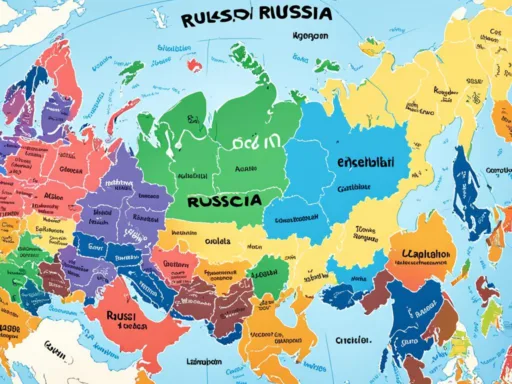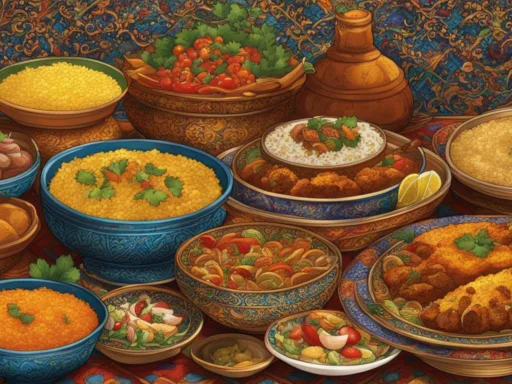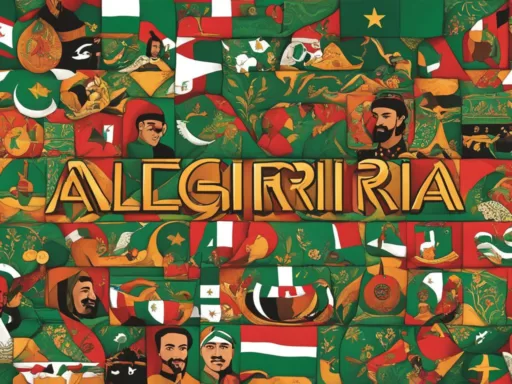Delving into the heart of Eastern Africa, one discovers the rich linguistic diversity Kenya champions as a nation. As a melting pot of cultures and ethnicities, the variety of languages spoken in Kenya reflects not merely the essence of its vibrant communities but also the intricate history this nation unfolds. With Swahili and English standing firm as the two official languages of the country, they offer a glimpse into a legacy woven by Bantu roots and colonial threads. Beyond these lingua francas, Kenya’s linguistic repertoire boasts a spectrum that captivates any language enthusiast or cultural explorer.
The harmonious coexistence of languages spanning from indigenous tribal tongues to global vernaculars reveals much about Kenya’s societal fabric. While Swahili permeates everyday life across numerous ethnic boundaries, English punctuates the spheres of higher education, governance, and international commerce. This linguistic duality enriches Kenya, providing pathways for both tradition and modernity to thrive.
Key Takeaways
- Kenya’s vibrant linguistic diversity showcases a blend of historical influences and cultural connections.
- Swahili and English are the official languages spoken in Kenya, serving as crucial communicative tools throughout the nation.
- The extensive use of Swahili across various ethnic groups underscores its significance as a unifying element in Kenyan society.
- English in Kenya carries the legacy of British colonial rule yet remains an essential language within the domains of administration and education.
- The multiple languages existing in Kenya highlight the country’s role as a nexus of African cultural and linguistic plurality.
- Understanding the languages spoken in Kenya opens a window into the country’s complex, kaleidoscopic identities.
Linguistic Landscape of Kenya
Kenya’s rich cultural mosaic is vividly reflected in its language panorama, painting a picturesque image of this nation’s soul. With a spectrum of tongues that span the breadth of the continent’s history, Kenyans collectively converse in indigenous dialects, colonial legacies, and metropolitan novelties. This multilingual display is indicative of Kenya’s standing as a microcosm of Africa’s ethnoracial and linguistic wealth.

Within this linguistic tapestry lies a diversity that captures the attention of linguists, travelers, and enthusiasts alike. The spoken words of the tribal languages of Kenya resound with the echoes of time-honored traditions, whereas the national languages of Kenya serve as bridges connecting various ethnic groups to each other and to the world.
Cultural and Geographic Diversity
The interweaving of dialects and accents across Kenya’s landscape tells a story of migration, trade, and convergence. Here, language is both a vestige of the past and a key to contemporary life. As we navigate through the vast savannahs to the bustling urban centers, we encounter myriad communities each upholding their unique linguistic identity while harmoniously sharing common verbal ground.
Population and Ethnolinguistic Groups
In the verdant highlands, the melodious language of the Kikuyu resounds, while the coastal breezes carry the rhythmic utterances of Swahili speakers. The 2019 census reveals that the languages of the Bantu, such as Kikuyu, Kamba, and Luhya, resonate with millions across the populace. Moving towards the arid northern regions, the sonorous cadence of Nilotic languages, including Maasai and Turkana, punctuates the dry air. Cushitic tongues, such as Somali and Rendille, spoken by smaller ethnic minorities, add to this polyphonic chorus.
With the popular languages of Kenya serving a multitude of communicative purposes, the country’s linguistic narrative is not just one of plurality but also of unity. Whether through the distinct inflections of indigenous languages or the widespread use of Swahili and English, the stories of Kenya are told in a symphony of sounds that together articulate the collective identity of this proud nation.
Official Languages of Kenya: A Colonial Legacy
Kenya’s linguistic authority is dual-purposed with English and Swahili bearing significant roles both in historic legacy and in present-day communication. Draped in the history of British colonial rule, English Kenya, primarily British English, has transformed over time, integrating elements from native speech patterns to establish what is known as Kenyan English. Swahili, on the other hand, has served as a cultural centerpiece with its widespread use and adaptability, evolving through trade and interaction to become Kenya’s lingua franca.

English and Swahili: Kenya’s Dual Linguistic Authorities
While English is meticulously employed in formal scenarios such as large corporations, institutes of higher learning, and government settings, Swahili finds its dominance in everyday communication, thriving in markets, media, and primary education. Both official languages of Kenya serve distinct yet complementary functions, illustrating a balanced linguistic ecosystem where each language thrives in its respective domain.
The Role of English in Kenyan Society
Although sharing its origins with British English, the English spoken in Kenya carries an identity of its own. Richly influenced by the languages native to the region including Kiswahili and Kikuyu, Kenyan English uniquely echoes the country’s collective voice. Its prevalence, however, is contrasted by the rural populations’ preference for native dialects, with English’s reach being less pronounced among these communities.
Swahili’s Ubiquity and Cultural Significance
Swahili’s omnipresence in Kenya’s social framework is not only a testament to its use as a lingua franca, but also to its deep cultural resonance. Reflecting its historical roots in East African coast trade and bearing the significant Swahili’s influence, the language sparkles with foreign lexemes, primarily Arabic, enhancing its versatility. Its broad acceptance is highlighted by the prevalence of the kiMvita dialect within local communities, adding to the collective Kenyan speech.
- Swahili Kenya as a unifier in diverse communities
- English Kenya as the enterprise and education language
- Transition of British English to Kenyan English
- Swahili’s versatile adaptability in word borrowing and use in various sectors
Languages Spoken Kenya
Kenya’s cornucopia of languages demonstrates the immense linguistic diversity of the nation. It is a land where the spoken word is as varied as its landscapes, with a multitude of tongues telling a story of cultural richness and complexity. The vitality of this multilingualism is a testament to the country’s ethnoracial and linguistic groups, each contributing its voice to the symphony that is languages spoken in Kenya.

Prevalence and Distribution of Languages
Kenyan society is a vibrant patchwork of speech patterns, where traditional and modern blend seamlessly. According to Ethnologue, around 70 active languages are spoken by the Kenyan people, including those from the Niger-Congo and Nilo-Saharan language families. This array of languages reflects not only everyday communication but also the identity and heritage of communities both large and small throughout the country.
Language Families: From Bantu to Afroasiatic
Language families in Kenya form the backbone of the country’s linguistic identity. The Bantu languages Kenya possesses, stand as the majority, with prevalent languages like Kikuyu and Luhya spoken by vibrant communities. In contrast, Afroasiatic languages Kenya hosts, such as Somali, signify the diverse pastoralist languages that paint the country’s linguistic landscape. These families encompass a legacy spanning from distinct regional dialects to languages that have traversed the expanse of Eastern Africa. The following table provides an overview of Kenya’s language families and some significant languages that fall under each category.
| Language Family | Significant Languages | Estimated Number of Speakers |
|---|---|---|
| Bantu | Kikuyu | 8.1 million |
| Bantu | Luhya | 10 million |
| Nilotic/Paranilotic | Maasai | 1.2 million (Kenya) |
| Cushitic | Somali | 2.8 million |
Indigenous Languages and Regional Dialects
At the heart of Kenya’s linguistic heritage lie the indigenous languages and regional dialects that form an essential aspect of the nation’s identity. These languages, deeply rooted in the diverse communities of the country, offer a mosaic of sounds and cultural richness that are integral to the nation’s sociolinguistic fabric.
The Bantu Language Family
With Bantu speakers Kenya dominating the linguistic scene, this language family comprises a vast array of dialects that are inherently tied to the nation’s cultural framework. The Bantu languages such as Kikuyu, Luhya, and Kamba are not only part of Kenya’s daily conversations but also serve as a bond among tribal languages Kenya communities, highlighting their importance in preserving ethnic heritage.
| Bantu Language | Region Predominantly Spoken | Number of Speakers |
|---|---|---|
| Kikuyu | Central Kenya | 8.1 Million |
| Luhya | Western Kenya | 10 Million |
| Kamba | Eastern Kenya | 4.7 Million |
Nilotic and Cushitic Linguistic Varieties
Complementing the Bantu languages are the Nilotic languages Kenya, exemplified by the Luo, which resonate across the country and beyond its borders. These languages showcase the rich oral traditions and histories of their speakers. Furthermore, the Cushitic languages, with Somali leading among them, represent a significant part of Cushitic languages Kenya, bringing forth a cultural narrative from the pastoral communities.
- Nilotic language: Luo (5 Million speakers)
- Cushitic language: Somali (2.8 Million speakers)
- Cushitic dialect: Borana (Approximately 3.4 Million speakers)
- Minor Cushitic language: Rendille (60,000 speakers)

The spectrum of languages spoken by the people of Kenya remains a testament to the country’s status as a crucible of linguistic diversity. From the widespread Bantu tongues to the distinct Nilotic and Cushitic linguistic varieties, each language contributes uniquely to the narrative of a nation woven through tradition, community, and communication.
The Influence of Globalization and Urbanization on Kenyan Languages
As Kenya navigates the waves of globalization and urbanization, its linguistic map is redrawn, giving rise to new forms of expression that encapsulate the country’s adaptability to change. One such phenomenon that has dynamically altered the urban languages Kenya celebrates is the emergence of Sheng. This modern vernacular, born in the bustling streets of Nairobi and now a hallmark of urban youth culture across the nation, mirrors the vibrant energy and hybrid identity of contemporary Kenya.

The Emergence of Sheng: Kenya’s Urban Vernacular
Sheng, the quintessential urban language Kenya has nurtured, is not merely a means of communication but a statement of culture and identity. A tapestry rich with threads of diverse ethnic languages, English, and the structure of Swahili, Sheng has evolved beyond a pidgin to become a social phenomenon. Radiating from the heart of Nairobi’s informal settlements, the language of Sheng has ascended into a symbol of urban sophistication, marking the city’s rhythm and its inhabitants’ modern ethos.
The ingenuity behind Sheng lies in its language mixing, a creative synthesis that allows speakers to navigate both traditional and contemporary worlds. It is a testament to the resilient nature of language and its power to bind communities together while also serving as an avenue for individual expression.
Language Shifts Among the Kenyan Youth
Young Kenyans, in pursuit of a modern identity that resonates with their urban milieu, have embraced Sheng as more than slang; it’s a social currency that transcends ethnic divisions. This linguistic trend showcases a significant language shift Kenya is witnessing – where the patois of the youth, informed by global exchanges, takes center stage. The prominence of Sheng among the youth not only reflects language shifts in Kenya but also the interplay between language, technology, and global culture, highlighting the nation’s linguistic agility.
Sheng’s ubiquitous presence across various aspects of Kenyan life – music, television, and digital media – is forging new pathways for communication and cultural production. While some fear that it may erode the proficiency in official languages, others view it as a vibrant evolution of Kenyan speech – one that illustrates the natural cycle of language mixing and shifts in Kenya.
- Sheng as a proxy for the evolving identity of Kenyan urban youth
- Language mixing as a reflection of the socio-cultural dynamics of Kenyan society
- Linguistic fluidity and adaptability highlighting the transformative nature of language
In conclusion, as Kenya continues to progress and integrate into the global community, the linguistic diversity it exhibits – from Sheng in the cities to the varied indigenous tongues in rural areas – remains a compelling narrative of adaptation and change. The influence of globalization and urbanization on Kenyan languages paints a picture of a nation that’s confidently voicing its unique cultural fusion to the world.
Conclusion
As we witness the dynamic interplay of cultures and tongues across Kenya’s landscape, it becomes evident that the preservation of linguistic diversity in Kenya is not just a cultural imperative but a bridge connecting past, present, and future. The profound linguistic heritage Kenya carries is a treasure trove of knowledge, diversity, and identity, enriching the global tapestry of cultures. In a world where homogenization looms, a modernizing society’s languages in Kenya face both the trials of time and the promise of perpetuation.
The Future of Language Diversity in Kenya
The onward march of global integration poses a complex challenge for the preservation of linguistic diversity in Kenya. As societal narratives evolve, so too must the strategies to maintain this vibrant linguistic realm. Conscious efforts by educators, policymakers, and communities to nurture all languages, especially indigenous ones, will determine the robustness of Kenya’s ethnolinguistic future. The success of this endeavor lies not only in the hands of Kenyan society but also in international support for cultural pluralism.
Preservation of Linguistic Heritage in a Modernizing Society
In the face of rapid modernization, the task of upholding the linguistic heritage Kenya prides itself on is imperative. By fostering an educational ecosystem where children can learn in their mother tongues, alongside English and Swahili, Kenya can ensure that its diverse voices are not just preserved but celebrated and amplified. It is in this harmonious balance between embracing global communication conduits and honoring native dialects that the heart of Kenya’s multilingual legacy will continue to beat with vigor, resilience, and boundless creativity.
FAQ
What languages are spoken in Kenya?
Kenya is a multilingual country with 68 languages spoken across its territories. These include official languages English and Swahili, along with various indigenous Bantu, Cushitic, and Nilotic languages such as Kikuyu, Luo, Maasai, Kamba, Luhya, and Somali. Additionally, the urban youth language Sheng and other regional dialects contribute to the linguistic diversity in Kenya.
How does Kenya’s cultural and geographic diversity influence its languages?
Kenya’s varied cultural and geographical landscapes foster a wealth of ethnoracial and linguistic groups. This diversity results in a rich tapestry of languages that are used by different ethnicities, each with its customs and histories. The country’s geographic diversity, from coastal regions to highland zones, also leads to a range of dialects within the major language families.
What are the population and ethnolinguistic groups in Kenya?
Kenya’s population consists of multiple ethnolinguistic groups. Each group typically speaks its indigenous language, with Bantu-speaking communities such as the Kikuyu, Luhya, and Kamba; Nilotic-speaking groups including the Luo, Kalenjin, and Maasai; and Cushitic-speaking peoples like the Somali and Rendille. These groups reflect the country’s demographic diversity.
Why are English and Swahili considered Kenya’s dual linguistic authorities?
English and Swahili are the official languages of Kenya, having distinct but complementary roles. English, inherited from the colonial period, is used in government, higher education, and formal business. Swahili, acting as the national language, is widespread, permeating everyday conversation, media, trade, and primary education. Both facilitate communication across various ethnic groups and serve as lingua francas.
How has the English language evolved in Kenyan society?
In Kenya, English has adopted a local variant known as Kenyan English, which incorporates elements from the country’s native Bantu languages, particularly Swahili and Kikuyu, as well as influences from American English. This evolution reflects Kenya’s history and ongoing interactions with global cultures.
What is the cultural significance of Swahili in Kenya?
Swahili, a Bantu language with deep historical ties to Arabic through trade, is a critical component of Kenya’s cultural identity. It stands as a symbol of shared heritage and is vital to everyday communication, business, and entertainment. Swahili’s cultural significance is further emphasized by its use in education and its status as the national language.
Can you provide an overview of the prevalence and distribution of languages in Kenya?
In Kenya, languages are distributed based on ethnicity and geography. The most prevalent language family is Bantu, with languages like Kikuyu, Luhya, and Kamba spoken by huge portions of the population, especially in the central and western regions. Nilotic languages, such as Luo and Maasai, are common in the western and southern parts, respectively. Cushitic languages, including Somali, are predominant in the northeastern regions of Kenya.
What are the major language families spoken in Kenya?
The major language families in Kenya are Bantu, Nilotic, and Cushitic. The Bantu family includes languages such as Kikuyu and Luhya, the Nilotic family consists of languages like Luo and Kalenjin, and the Cushitic family encompasses Somali and Oromo among others. These families represent the diverse linguistic heritage of the nation, each with unique linguistic features.
How prominent are indigenous languages and regional dialects in Kenya?
Indigenous languages and regional dialects are incredibly prominent in Kenya. Each ethnic community tends to communicate primarily in their indigenous language within their regions. Regional dialects serve not only as a means of communication but also as cultural identifiers, with strong ties to local customs, folklore, and societal structures.
What impact has globalization and urbanization had on Kenyan languages?
Globalization and urbanization have greatly influenced Kenyan languages, particularly with the emergence of Sheng, which represents the blending of English, Swahili, and ethnic languages. These processes have led to increased language mixing and the creation of new vernaculars that reflect contemporary urban identities and global cultural exchanges.
What is Sheng, and how has it become a significant part of Kenya’s urban vernacular?
Sheng is a creole language that originated in Nairobi’s urban areas. It blends Swahili syntax with vocabulary from English and various ethnic languages. Initially associated with the youth and lower socioeconomic groups, Sheng has since gained widespread acceptance and is now considered a marker of hip, urban identity across different social strata.
How are language shifts among Kenyan youth manifesting?
Language shifts among Kenyan youth are evident in the dynamic and evolving usage of Sheng, which serves as a cultural emblem that differentiates the younger generation from their elders. Youth-driven language innovations highlight a desire for a unique identity and solidarity within the urban landscape.
What does the future hold for language diversity in Kenya?
The future of language diversity in Kenya will likely see ongoing changes, influenced by trends in global communication, education, and migration. While English and Swahili may further solidify their positions, there is a growing recognition of the need to preserve indigenous languages. Language policy, educational initiatives, and community-driven efforts will be integral to sustaining the linguistic heritage of Kenya.
How is Kenya’s linguistic heritage being preserved amidst modernization?
Preserving Kenya’s linguistic heritage in the face of modernization involves a balance between embracing global languages for wider communication and nurturing native tongues as cultural treasures. Initiatives include implementing educational programs in indigenous languages, promoting linguistic diversity in the media, and supporting translation and documentation projects for lesser-known languages.






